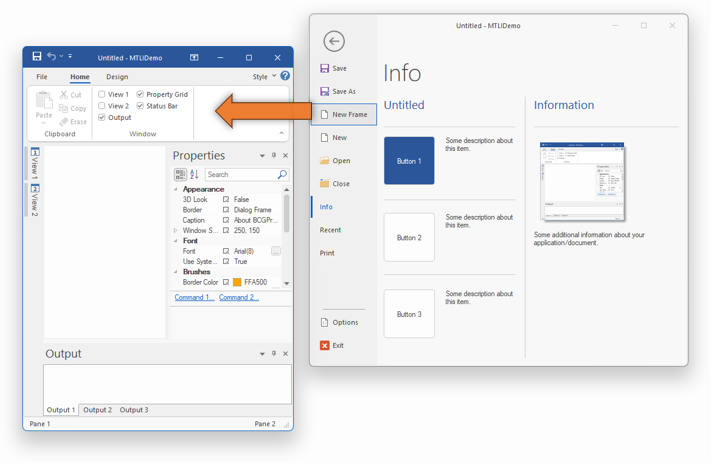Multiple Top-level Document Interface support
 BCGControlBar Pro (MFC)
BCGControlBar Pro (MFC)
 BCGSuite (MFC)
BCGSuite (MFC)
 BCGControlBar for .NET
BCGControlBar for .NET
The multiple top-level document interface is a user interface (UI) found in MS Office applications, such as MS Word and PowerPoint. In this type of application, when the user clicks "New Frame" on the File menu (or Ribbon backstage view), the application creates a top-level frame window that hosts a new view.
BCGControlBar Pro for MFC provides the following additions, allowing you to keep all frame windows synchronized:
- Toolbar customization: when the user opens the toolbar customization dialog, all other frames are disabled, allowing the user to customize only the toolbars or menu bar in the current frame. When the customization is finished, the toolbar state is copied to other frames. In addition, when the user changes the toolbar layout by holding the Alt key and dragging buttons, the layout will be automatically synced across all frame windows.
- Ribbon bar customization: when the user starts the ribbon customization, all other frames become disabled. When the customization is finished, the ribbon state (including QAT location, options, and content) is copied to the other frames.
- Keyboard customization: if the keyboard accelerator table is modified in the active frame window, the framework will automatically copy it to other frames.


